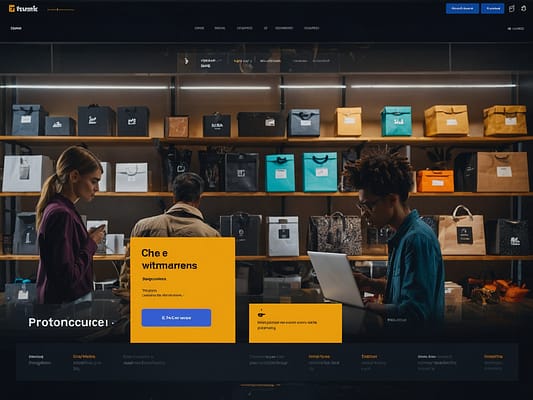Turning Business Challenges into Opportunities Amid Asia’s Low Birth Rate
Asia’s low birth rate is transforming its demographic landscape, and while this presents challenges, it also creates significant opportunities for forward-thinking businesses. From automation to tapping into the senior market, companies can embrace new strategies to thrive in this evolving environment.
As businesses navigate a shrinking younger population, innovation and adaptation are key. Here’s how businesses can turn Asia’s low birth rate into growth opportunities:
Automation and AI! Maximizing Efficiency
Asia’s aging population means fewer young people entering the workforce, pushing businesses to adopt automation and AI technologies. By streamlining operations, companies can reduce labor costs, enhance productivity, and remain competitive. Automation isn’t just a necessity; it’s an opportunity to future-proof your business.
Key Benefits:
- Increased efficiency
- Cost reduction
- Scalability for growth
Tapping Into the Senior Market
With an aging population, there’s a growing demand for senior products and services. From healthcare to leisure, businesses that cater to older adults have a competitive edge. As seniors live longer and stay healthier, they will continue to be a significant source of consumer spending.
Key Opportunities:
- Healthcare products
- Senior-friendly technologies
- Leisure and travel services
Building a Multigenerational Workforce
As older employees stay in the workforce longer, there’s an opportunity to build diverse, multigenerational teams. These teams bring unique skills and perspectives, fostering innovation and improving decision-making.
Key Benefits:
- Knowledge transfer
- Boosted creativity
- Better employee retention
Capitalizing on Health and Wellness Trends
As people age, there’s a rising focus on health and wellness. Businesses that offer products and services related to fitness, mental health, and preventative care will see growing demand from both older adults and younger generations focused on well-being.
Key Opportunities:
- Fitness and wellness apps
- Nutritional supplements
- Preventative healthcare products
Digital Transformation Expanding Reach
The digital shift is critical as more consumers move online. Businesses that embrace e-commerce, digital marketing, and AI-driven solutions will expand their reach, tap into new markets, and improve customer engagement.
Key Benefits:
- Access to global markets
- Personalized customer experiences
- Cost efficiency
Smart Cities and Urbanization
Asia’s aging population is also driving urbanization. With a focus on sustainability and smarter urban planning, businesses that provide smart city solutions—such as IoT, renewable energy, and smart transport—can benefit from long-term growth.
Key Opportunities:
- Smart home technologies
- Renewable energy solutions
- Sustainable infrastructure services













Government Incentives Supporting Families
Governments in Asia are offering various incentives to encourage families to grow, such as subsidies, parental leave, and tax breaks. Businesses catering to young families—especially in childcare, education, and family health—stand to benefit from these policies in the years to come.
Key Benefits:
- Increased consumer spending
- Access to government incentives
- New, loyal customer bases
Additional Ideas to Capitalize on the Low Birth Rate Trend
In addition to the strategies mentioned, there are several other ways businesses can embrace the demographic shifts in Asia to maintain relevance and profitability.
Catering to the Single-Person Household Market
As birth rates decline, many families are opting for fewer children or choosing to remain single. This leads to a rise in single-person households, particularly in countries like Japan and South Korea. The rise in single-person households presents a huge opportunity for businesses offering tailored solutions to individuals rather than families.
Key Opportunities:
- Single-person apartments or compact housing solutions
- Customized nutrition or meal plans for individuals
- Personalized tech products, such as wearables or smart home devices designed for single users
- Convenient health services, like home delivery of prescription medication or on-demand telehealth consultations
Businesses in real estate, food delivery, personal tech, and healthcare can all tailor their offerings to cater to this growing segment.
Subscription and Convenience-Based Business Models
As the population ages and people’s lifestyle needs evolve, there is an increasing preference for convenience-based services. Subscription models are especially popular, as they offer convenience and can be customized to meet the needs of both older adults and younger working professionals. Whether it’s for groceries, household essentials, or fitness services, subscription-based businesses that cater to convenience will thrive.
Key Opportunities:
- Subscription boxes for seniors with curated wellness or lifestyle products
- Digital subscription services for entertainment, education, or e-learning
- Meal kit delivery services tailored for single-person households or families with older members
- Fitness or wellness apps with subscription models offering personalized health plans and consultations
Investing in Sustainable and Eco-Friendly Products
The increasing global focus on sustainability is especially pronounced in Asia, where urbanization and the push for smarter cities are leading to greater awareness around environmental issues. As more consumers (especially younger generations) prioritize eco-friendly products, businesses that cater to this demand will be ahead of the curve.
Key Opportunities:
- Green energy solutions and renewable products
- Sustainable packaging for consumer goods
- Eco-friendly fashion and textiles
- Smart home devices that reduce energy consumption
- Sustainable transportation, like electric bikes or cars
Investing in sustainability is not just good for the planet—it’s also a great business strategy, as many consumers are now willing to pay a premium for products and services that align with their environmental values.
Elderly Care Innovation and Technology
With Asia’s aging population, there is a rapidly growing demand for elderly care services. Traditional nursing homes and care facilities are no longer the only options; the market is moving toward more personalized, tech-driven solutions that help seniors live independently for longer.
Key Opportunities:
- Health-tech innovations: Wearable health devices that track vital signs, smart medicine dispensers, and telemedicine services.
- Home care apps: Platforms that help families coordinate home-based care services for elderly relatives.
- Robotics for elderly care: Robots designed to assist seniors with mobility, social interaction, and daily tasks.
- Senior living solutions: High-tech senior housing that incorporates smart devices to improve safety and comfort.
Businesses that invest in elderly care technologies can not only address a critical societal need but also tap into a lucrative, fast-growing market.
Leveraging International Talent and Immigration Policies
As local birth rates drop and domestic workforces age, many countries are increasingly looking to immigration to fill labor gaps. By hiring international talent and creating flexible workplace policies, businesses can alleviate the pressures caused by a shrinking workforce.
Key Opportunities:
- Offering remote work or flexible work visas to attract talent from outside Asia.
- Implementing programs to train and retain international employees.
- Encouraging workforce diversity through inclusive hiring practices.
By leveraging international talent, businesses can access a broader pool of skills and ideas, helping them stay competitive in a globalized economy.
Turning Challenges into Opportunities
Asia’s declining birth rate is undoubtedly a complex challenge, but it also presents businesses with an opportunity to pivot, innovate, and grow. The key is to embrace these shifts and adapt to changing consumer behaviors, workforce dynamics, and market demands. Whether through automation, catering to the aging population, or creating smart solutions for cities and homes, businesses that remain agile and forward-thinking will continue to thrive.
As we move into the future, those who are proactive in understanding demographic trends and aligning their strategies with these shifts will find themselves at the forefront of growth and success. Let TradeLink Solution guide your business through this evolving landscape with the insights and solutions needed to ensure long-term sustainability and profitability.



